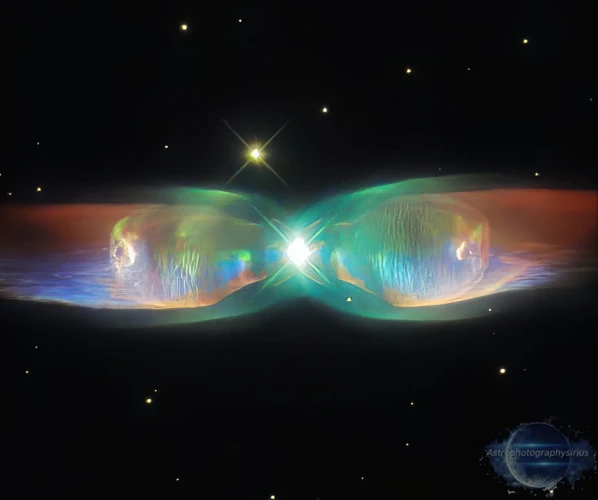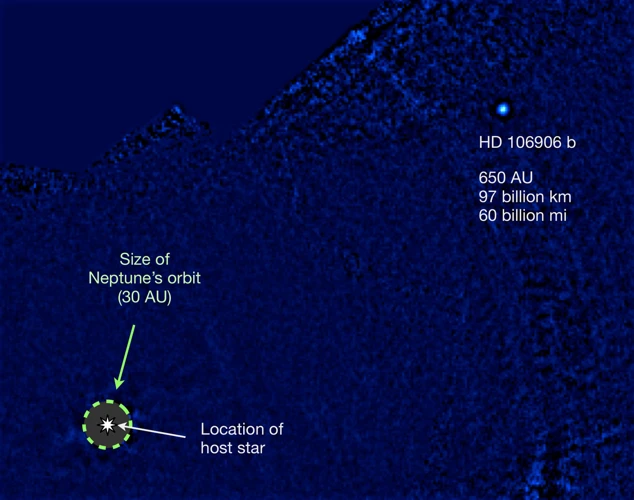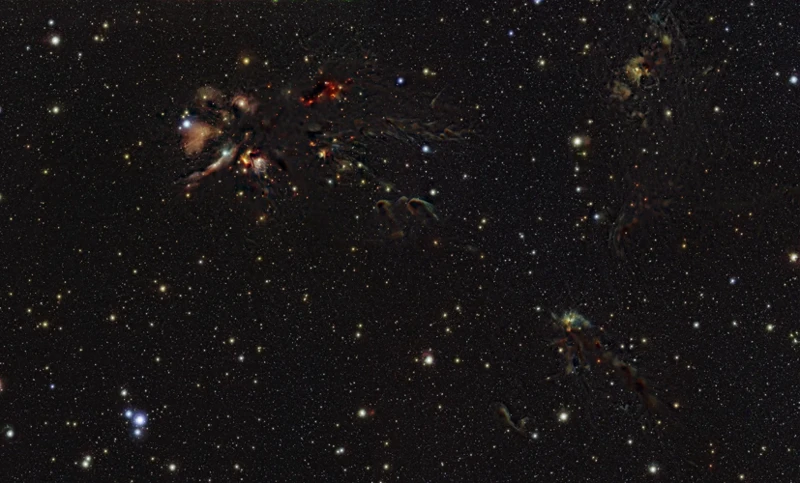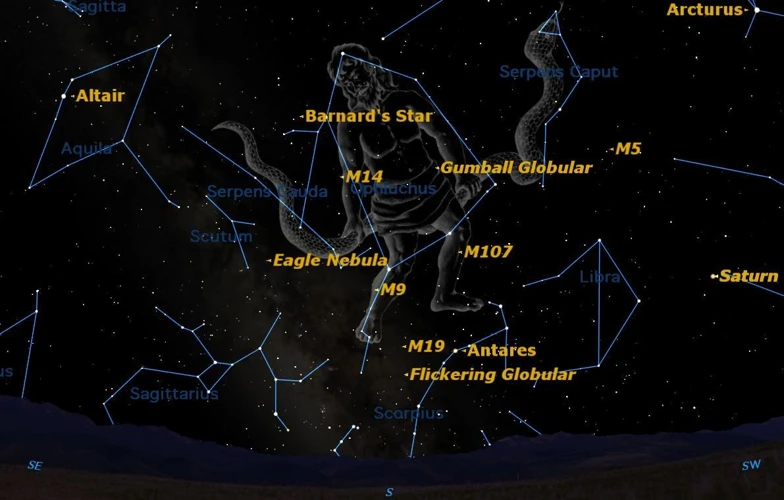Welcome to the Enigmatic World of Perseus Constellation
Step into the captivating realm of the Perseus constellation, where celestial wonders await to be unraveled. Nestled within the vast expanse of the night sky, this cosmic region holds a myriad of mysteries and awe-inspiring phenomena. Prepare to be mesmerized as we embark on an extraordinary journey, delving into the enigmatic depths of space, exploring stellar spectacles, exoplanet exploration, cosmic mysteries, and the tools that enable us to venture further into the celestial unknown. Join us as we unravel the secrets that lie within the Perseus constellation and unveil the grandeur of the cosmos.
Contents
- The Mystery of Perseus
- Stellar Spectacles
- Exoplanet Exploration
- Cosmic Mysteries
- Exploration Tools
- The Future of Perseus Exploration
- Conclusion
-
Frequently Asked Questions
- 1. What is the significance of the Perseus constellation?
- 2. Can the Perseus constellation be seen from both hemispheres?
- 3. What is the most famous star in the Perseus constellation?
- 4. Are there any exoplanets discovered within the Perseus constellation?
- 5. What is the Perseus Cluster?
- 6. What are open star clusters?
- 7. How are supernova remnants formed?
- 8. What is the Perseus Molecular Cloud?
- 9. What are some cosmic mysteries associated with Perseus?
- 10. How do telescopes and observatories contribute to exploring Perseus?
- References
-
Frequently Asked Questions
- 1. What makes the Perseus constellation unique?
- 2. How do astronomers study the Perseus constellation?
- 3. What are supernova remnants?
- 4. What are open star clusters?
- 5. What are the different types of nebulae in the Perseus constellation?
- 6. What is the quest for habitable exoplanets?
- 7. How have exoplanet discoveries expanded our understanding of the universe?
- 8. How do astronomers unveil exoplanet atmospheres?
- 9. What is the significance of black holes and quasars?
- 10. How do telescopes and observatories aid in Perseus exploration?
- References
- Read More
The Mystery of Perseus

The Mystery of Perseus constellation lies in its rich history and the intriguing celestial objects it holds. One of the most captivating features within Perseus is the famous variable star Algol, or “the Demon Star.” This peculiar star exhibits periodic variations in its brightness, which puzzled astronomers for centuries until they discovered that Algol is actually an eclipsing binary system. Another puzzling phenomenon found within Perseus is the Perseus Cluster, a vast collection of galaxies enveloped by a vast cloud of hot gas. This cluster is a subject of great interest to cosmologists, as it provides insights into the formation and evolution of galaxy clusters. Additionally, the iconic Double Cluster, consisting of two open star clusters, NGC 869 and NGC 884, adds to the enigmatic nature of Perseus. These clusters, with their dazzling array of stars, have fascinated stargazers for generations. As we delve further into the mystery of Perseus, we encounter the Perseus Molecular Cloud, a vast region of interstellar gas and dust that serves as a cosmic nursery for the birth of new stars. Here, protostars and stellar nurseries are formed, creating stunning celestial objects like the California Nebula and the Heart and Soul Nebulae. The Perseus constellation truly embodies the essence of cosmic allure and continues to captivate astronomers and stargazers alike. (source: exploring-draco-constellation-secrets)
Stellar Spectacles

Stellar Spectacles within the Perseus constellation offer a mesmerizing display of cosmic wonders. First, we delve into the Supernova Remnants, powerful remnants of stellar explosions that release an immense amount of energy and material into the surrounding space. These remnants, such as the famous Cassiopeia A, provide valuable insights into the lives and deaths of massive stars. Moving on to Open Star Clusters, we encounter clusters like the Alpha Persei Cluster, a dazzling group of young, hot stars that mesmerize observers with their brilliance. These clusters serve as stellar nurseries and offer a glimpse into the formation of stars and planetary systems. Lastly, we explore Nebulae, celestial clouds of gas and dust that come alive with vibrant colors and intricate patterns. The Perseus constellation is home to the beautiful California Nebula and the breathtaking Heart and Soul Nebulae, where new stars are born. Prepare to be awe-inspired by the stellar spectacles that grace the skies within the Perseus constellation. (source: /the-tenth-house-career-ambition/)
1. Supernova Remnants
Supernova remnants within the Perseus constellation are remnants of massive stars that have reached the dramatic end of their lives in colossal explosions. These remnants provide a mesmerizing glimpse into the immense power and energy released during a supernova event. One notable example is the supernova remnant known as IC 443, or the Jellyfish Nebula. This stunning nebula showcases the remnants of a supernova explosion that occurred thousands of years ago. Within its intricate structure, we observe shockwaves, filaments, and glowing gas, all of which contribute to its captivating appearance. Another remarkable supernova remnant is G109.1-1.0, also known as CTB 1, which exhibits a distinct shell-like structure with intricate filaments that have been shaped by the explosion’s aftermath. These celestial remnants not only serve as a testament to the astonishing power of supernovae but also provide crucial insights into the life cycles of stars and their impact on the surrounding interstellar medium. (source: role-houses-natal-charts)
2. Open Star Clusters
Open star clusters within the Perseus constellation offer a breathtaking view of stellar beauty and serve as windows into the mysteries of star formation and evolution. One notable open star cluster in Perseus is NGC 1245, located about 7,200 light-years away from Earth. NGC 1245 is home to a gathering of young, hot stars that illuminate the surrounding cosmic landscape. These massive stars emit intense radiation, sculpting the surrounding gas and dust into intricate structures. Another captivating open cluster is Collinder 39, situated approximately 3,600 light-years away from our planet. Within Collinder 39, hundreds of stars come together in a mesmerizing dance of gravitational attraction. The stars within open clusters are believed to form from the same molecular cloud, sharing a common origin and age. By studying these clusters, astronomers can unravel the intricacies of stellar evolution and gain insights into the formation of our own Solar System. As we gaze upon the open star clusters of Perseus, we are reminded of the immense beauty and complexity of the cosmos, as well as the ongoing processes that shape the vast expanse of the universe.
3. Nebulae
Nebulae are celestial phenomena that add an ethereal beauty to the Perseus constellation. These vast clouds of gas and dust come in different shapes and sizes, each offering a unique glimpse into the cosmic landscape. One notable nebula within Perseus is the California Nebula. Named for its resemblance to the shape of the U.S. state, this emission nebula comprises glowing hydrogen gas, illuminated by nearby stars. Its vivid reddish glow creates a striking contrast against the dark void of space. Moving further into the constellation, we encounter the Heart and Soul Nebulae. These neighboring nebulae are connected both visually and physically, as they share a similar distance and are located in the same region of space. The Heart Nebula, officially known as IC 1805, is a region of intense star formation, while the Soul Nebula, or IC 1848, features a cluster of young stars surrounded by delicate filaments of glowing gas. Together, these nebulae offer a breathtaking display of cosmic artistry. As we explore deeper into Perseus, we discover the Jellyfish Nebula, also known as IC 443. This supernova remnant showcases the aftermath of a massive stellar explosion, with wisps and tendrils of gas stretching across the cosmic canvas. Its intricate structure and vibrant hues make it a favorite among astrophotographers and amateur astronomers. Nebulae within the Perseus constellation epitomize the enchantment of the cosmos, captivating our imagination and inspiring awe in the face of such celestial wonders.
Exoplanet Exploration

Exoplanet Exploration takes us on an exhilarating journey beyond our solar system, as we search for other habitable worlds and delve into the mysteries of exoplanetary atmospheres. With advancements in technology and space missions like the Kepler Space Telescope, scientists have discovered thousands of exoplanets orbiting distant stars. The quest to find habitable worlds, with conditions suitable for hosting life as we know it, has been a focal point of exoplanet exploration. Among the notable exoplanet discoveries is Kepler-452b, often referred to as Earth’s “cousin,” due to its similar size and potential for hosting liquid water. Unveiling exoplanet atmospheres has also been a significant area of study, as it provides valuable insights into their composition and potential for supporting life. By analyzing the light passing through an exoplanet’s atmosphere, scientists can identify the presence of different gases, such as water vapor, carbon dioxide, and methane. These discoveries not only fuel our curiosity about the possibility of extraterrestrial life but also enable us to better understand the diversity and dynamics of planetary systems beyond our own. Exoplanet exploration holds the promise of unveiling a multitude of cosmic wonders and expanding our understanding of the universe.
1. The Quest for Habitable Worlds
The quest for habitable worlds within the Perseus constellation has long been a driving force for astronomers and astrobiologists. With the realization that our own planet is just one among countless celestial bodies in the universe, researchers have been tirelessly searching for exoplanets that may possess the necessary conditions for life to thrive. One intriguing approach in this quest is the identification of exoplanets within the habitable zone of their parent stars. The habitable zone, also known as the “Goldilocks zone,” refers to the region around a star where the conditions are just right for liquid water to exist on a planet’s surface. Several exoplanets have been discovered within the Perseus constellation that fall within these habitable zones, offering tantalizing possibilities for potential habitats for extraterrestrial life. These findings have sparked immense excitement and spurred further investigations into the composition, atmosphere, and potential for habitability of these exoplanets. The ongoing search for habitable worlds within Perseus and beyond continues to fuel our curiosity about the potential for life beyond Earth.
2. Exoplanet Discoveries
The field of exoplanet discoveries has made remarkable advancements within the realms of the Perseus constellation. Over the years, astronomers have employed various techniques and instruments to detect these distant worlds orbiting stars beyond our solar system. One notable exoplanet discovery within Perseus is the famous exoplanet system known as HD 209458 b, affectionately dubbed “Osiris.” This gas giant, located around 150 light-years away from Earth, garnered significant attention as it was one of the first exoplanets to have its atmosphere directly measured and analyzed. Through spectroscopic observations, scientists were able to detect the presence of various elements, such as sodium and water vapor, in its atmosphere, providing valuable insights into the composition of exoplanetary atmospheres. Another intriguing exoplanet discovery within Perseus is the planetary system Kepler-442, situated approximately 1,100 light-years away from us. This system is of particular interest as it hosts a potentially habitable exoplanet, Kepler-442b, located within the star’s habitable zone. With these remarkable discoveries, we continue to expand our understanding of planetary systems and explore the possibilities of finding extraterrestrial life within the vast expanse of the Perseus constellation.
3. Unveiling Exoplanet Atmospheres
Unveiling the atmospheres of exoplanets has been a significant endeavor in the field of exoplanet exploration. By studying the composition and properties of exoplanet atmospheres, astronomers gain insights into their habitability and the potential presence of life-sustaining conditions. One method used to analyze exoplanet atmospheres is transit spectroscopy, where the light from a host star passes through the exoplanet’s atmosphere during its transit, revealing the chemical signatures imprinted in the starlight. This technique allows scientists to detect molecules such as water vapor, methane, carbon dioxide, and even potentially signs of life, like oxygen or ozone. Another approach is direct imaging spectroscopy, which involves capturing the light emitted by exoplanets itself. This method is challenging since the light from the exoplanet is often overwhelmed by the glare of its host star. However, with technological advancements, astronomers have been able to develop innovative instruments and techniques to tackle this obstacle. The next-generation James Webb Space Telescope (JWST), set to launch in 2021, will play a crucial role in unraveling the complexities of exoplanet atmospheres. Equipped with highly sensitive instruments, such as the Near-Infrared Spectrograph (NIRSpec) and the Mid-Infrared Instrument (MIRI), the JWST will enable a deeper understanding of exoplanet atmospheres and potentially provide vital clues about the presence of habitable conditions. The quest to unveil exoplanet atmospheres is an ongoing one, as scientists continuously refine their methods and explore new technological advancements to unlock the secrets of these distant worlds.
Cosmic Mysteries

The Perseus constellation holds within its celestial boundaries a multitude of cosmic mysteries waiting to be unraveled. One of the most captivating enigmas is the presence of black holes and quasars. These cosmic powerhouses, formed from the collapse of massive stars, possess gravitational forces so intense that not even light can escape their grasp. Their existence challenges our understanding of the fabric of space and time. Another perplexing phenomenon that remains elusive is the nature of dark matter and dark energy. These mysterious substances, which are thought to make up a significant portion of the universe, exert gravitational effects on visible matter but remain invisible to telescopes. Scientists are still striving to comprehend their true nature and unravel the secrets they hold. The Perseus constellation serves as a canvas for these cosmic enigmas, reminding us that the cosmos is a vast and mysterious place, inviting us to explore and seek answers to the perplexing questions it presents.
1. Black Holes and Quasars
Black holes and quasars are two intriguing celestial phenomena that contribute to the cosmic mystique within Perseus. Black holes, formed from the remnants of massive stars that have undergone gravitational collapse, possess an intense gravitational pull that can trap even light itself. These cosmic enigmas continue to fascinate scientists, as they challenge our understanding of space, time, and gravity. Perseus is home to several known black holes, such as XTE J1650-500 and V404 Cygni. These stellar remnants present unique opportunities for astronomers to study the effects of extreme gravity and the surrounding space-time distortions. Quasars, on the other hand, are among the brightest objects in the universe, emitting enormous amounts of energy as supermassive black holes devour surrounding matter. These distant, active galactic nuclei can be found within the Perseus constellation, providing insights into the early universe and the evolution of galaxies. Their intense radiation and peculiar characteristics have led scientists to unravel the mysteries of their formation and the role they play in the cosmic web. Studying black holes and quasars within Perseus offers a glimpse into the profound cosmic forces at play, challenging our knowledge and igniting our curiosity about the fundamental nature of the universe we inhabit.
2. Dark Matter and Dark Energy
Dark matter and dark energy are two of the most perplexing mysteries in the field of cosmology. Despite their elusive nature, scientists have made significant progress in understanding their existence and impact on the universe. Dark matter is a hypothetical form of matter that cannot be directly observed but is believed to make up a significant portion of the mass in the universe. Its presence is inferred through its gravitational effects on visible matter and the movement of galaxies. The exact composition and properties of dark matter remain unknown, and scientists continue to conduct experiments and observations in the quest to unravel its true nature. On the other hand, dark energy is a mysterious force that is believed to be responsible for the accelerating expansion of the universe. It is theorized to counteract the gravitational pull of matter and push galaxies apart. The nature of dark energy is not well understood, and its existence is inferred based on observations of distant supernovae and the cosmic microwave background radiation. Together, dark matter and dark energy shape the destiny of the universe and play a crucial role in its evolution. Understanding these enigmatic forces is key to gaining deeper insights into the fabric of the cosmos.
Exploration Tools

Throughout the ages, humanity has developed a vast array of exploration tools to traverse the cosmic wonders within the Perseus constellation. Chief among these tools are the powerful telescopes and observatories that allow us to peer deep into the celestial abyss. Leading the charge is the Hubble Space Telescope, which has revolutionized our understanding of the universe with its stunning images and groundbreaking discoveries. Additionally, ground-based observatories such as the Very Large Telescope (VLT) in Chile and the Keck Observatory in Hawaii provide astronomers with unprecedented clarity and precision in their observations. Complementing these telescopes are space missions like the Chandra X-ray Observatory, which grants us a unique perspective by detecting high-energy X-rays emitted by celestial objects. Innovative technologies such as adaptive optics enhance the capabilities of telescopes by correcting distortions caused by Earth’s atmosphere, enabling us to capture sharper and more detailed images. These exploration tools not only enable us to unlock the secrets of the Perseus constellation but also push the boundaries of our understanding of the universe as a whole.
1. Telescopes and Observatories
Telescopes and observatories play a crucial role in unraveling the mysteries of the cosmos within the Perseus constellation. These powerful instruments allow astronomers to peer deep into the vast expanse of space, capturing images and data that reveal celestial wonders. Among the notable observatories contributing to the exploration of Perseus is the Chandra X-ray Observatory. Launched by NASA in 1999, Chandra is specifically designed to detect X-ray emissions from high-energy celestial objects such as black holes, neutron stars, and supernova remnants. Its ability to observe X-rays helps scientists study the dynamic and violent processes occurring within the Perseus cluster, offering insights into the behavior of cosmic phenomena. Another remarkable observatory is the Very Large Array (VLA), situated in New Mexico. With its array of radio telescopes, the VLA can detect radio waves emitted by distant celestial objects, providing invaluable information about the structure and nature of galaxies within Perseus. Additionally, the Hubble Space Telescope has revolutionized our understanding of the universe. By orbiting above Earth’s atmosphere, Hubble can capture incredibly detailed images of celestial objects within Perseus, enabling scientists to study stars, nebulae, and galaxies with unprecedented clarity. These sophisticated telescopes and observatories continue to expand our knowledge and fuel our curiosity about the Perseus constellation, revealing its hidden wonders and unlocking the secrets of the cosmos.
2. Space Missions
Space Missions have played a pivotal role in our exploration of the Perseus constellation and the wider universe. One prominent mission that has greatly contributed to our understanding of Perseus is the Chandra X-ray Observatory. Launched in 1999, the Chandra X-ray Observatory has been instrumental in detecting and studying the high-energy X-ray emissions from various celestial objects within Perseus, including supernova remnants and active galactic nuclei. By capturing high-resolution X-ray images, Chandra has provided valuable insights into the physical processes and dynamics occurring within these objects. Another significant space mission that has contributed to Perseus exploration is the Spitzer Space Telescope. With its sensitive infrared detectors, the Spitzer Space Telescope has allowed astronomers to study the dust and gas present in the Perseus Molecular Cloud and has provided unprecedented views of young stars and protoplanetary disks forming within this region. The Kepler Space Telescope has made significant contributions to exoplanet exploration within Perseus, aiding in the discovery and characterization of distant planets orbiting other stars. The missions mentioned here are just a few examples of the many space-based observatories that have expanded our knowledge of the Perseus constellation, unveiling its mysteries and offering captivating glimpses into the wonders of deep space.
The Future of Perseus Exploration

The future of Perseus exploration holds boundless possibilities and exciting prospects for uncovering even greater mysteries of the cosmos. Advancements in technology and space exploration have paved the way for groundbreaking discoveries that await us in this celestial wonderland. One promising area of exploration is the study of exoplanets within the Perseus constellation. With the help of powerful telescopes and advanced observational techniques, scientists are actively searching for habitable worlds, seeking answers to the eternal question of whether life exists beyond Earth. The discovery of exoplanets within Perseus can provide invaluable insights into the formation and evolution of planetary systems, as well as the conditions necessary for life to thrive. Additionally, the exploration of black holes and quasars within Perseus holds incredible potential for unraveling the mysteries of these cosmic powerhouses. By studying the gravitational effects and energetic emissions of these enigmatic objects, scientists hope to gain a deeper understanding of the nature of black holes, as well as their role in galaxy formation and evolution. Advancements in space missions and telescopes are poised to play a crucial role in expanding our knowledge of Perseus. Future missions, such as the James Webb Space Telescope and the upcoming Nancy Grace Roman Space Telescope, will enable us to explore the depths of Perseus with unprecedented detail and clarity, unveiling cosmic wonders that were previously beyond our reach. The future of Perseus exploration holds the promise of unlocking new frontiers and pushing the boundaries of our understanding of the universe. It is a journey that will continue to captivate and inspire future generations of astronomers and space enthusiasts.
Conclusion

In conclusion, exploring the wonders within the Perseus constellation is a journey that unveils a tapestry of celestial marvels. From the enigmatic mysteries that shroud its stars and galaxies to the captivating exoplanets that may hold the potential for life, Perseus offers a myriad of cosmic treasures. Through the lens of powerful telescopes and with the aid of space missions, scientists and astronomers continue to unravel the secrets of this celestial realm. As we strive to understand the nature of black holes, dark matter, and dark energy, Perseus serves as a captivating canvas for our exploration into the unknown depths of the universe. The future of Perseus exploration holds the promise of uncovering new cosmic phenomena, shedding light on the unanswered questions that continue to ignite our curiosity. As we gaze upon the wonders of Perseus, we are reminded of our small place in the grand cosmos and the never-ending quest to expand our knowledge and understanding of the universe. So, let us embark on this cosmic journey together, fueled by the mysteries and wonders that await us within the captivating embrace of the Perseus constellation.
Frequently Asked Questions

1. What is the significance of the Perseus constellation?
The Perseus constellation holds historical and mythological significance. In Greek mythology, Perseus was a hero who slayed the monster Medusa. Astronomically, Perseus is home to fascinating celestial objects and is a target of interest for astronomers.
2. Can the Perseus constellation be seen from both hemispheres?
Yes, the Perseus constellation can be observed from both the Northern and Southern Hemispheres. However, it is more prominent and easier to see from locations in the Northern Hemisphere.
3. What is the most famous star in the Perseus constellation?
One of the most famous stars in Perseus is Algol, also known as “the Demon Star.” Algol is a variable star that undergoes periodic changes in brightness, captivating astronomers and amateur stargazers alike.
4. Are there any exoplanets discovered within the Perseus constellation?
As of now, no exoplanets have been discovered specifically within the Perseus constellation. However, astronomers continue to search for exoplanets using various techniques, and future discoveries within Perseus are always a possibility.
5. What is the Perseus Cluster?
The Perseus Cluster is a vast collection of galaxies located within the Perseus constellation. It is enveloped by a cloud of hot gas and is of great interest to cosmologists studying galaxy clusters and their formation.
6. What are open star clusters?
Open star clusters are groups of stars that formed from the same molecular cloud and remain gravitationally bound. Examples within Perseus include the visually striking Double Cluster, NGC 869 and NGC 884.
7. How are supernova remnants formed?
Supernova remnants are formed when a massive star explodes in a powerful supernova event. The explosion disperses stellar debris, including heavy elements, into space, where they mix with surrounding interstellar material.
8. What is the Perseus Molecular Cloud?
The Perseus Molecular Cloud is a vast region of gas and dust within the Perseus constellation. It serves as a cosmic nursery, giving birth to new stars through the process of star formation.
9. What are some cosmic mysteries associated with Perseus?
Perseus is associated with cosmic mysteries such as the existence and nature of dark matter and dark energy. Additionally, the study of black holes and quasars within Perseus continues to intrigue astronomers and cosmologists.
10. How do telescopes and observatories contribute to exploring Perseus?
Telescopes and observatories provide astronomers with the tools to observe and study celestial objects within the Perseus constellation. These instruments enable the collection of valuable data, leading to discoveries and a deeper understanding of the universe.
References
- Explore the Perseus Molecular Cloud
- Perseus Constellation – A Hero For Our Skies
- Perseus Constellation Deep Sky Tour – YouTube
Frequently Asked Questions

1. What makes the Perseus constellation unique?
The Perseus constellation stands out because it contains a diverse range of celestial wonders, including supernova remnants, open star clusters, nebulae, and exoplanet discoveries.
2. How do astronomers study the Perseus constellation?
Astronomers study the Perseus constellation using both ground-based telescopes and space missions, allowing them to observe and collect data on the various cosmic phenomena within this region.
3. What are supernova remnants?
Supernova remnants are the remnants of massive star explosions, and their study provides valuable insights into stellar evolution and the creation of heavy elements in the universe.
4. What are open star clusters?
Open star clusters are groups of stars that formed from the same molecular cloud. They offer unique opportunities to study star formation, stellar dynamics, and even exoplanet detection.
5. What are the different types of nebulae in the Perseus constellation?
The Perseus constellation is home to various types of nebulae, including emission nebulae, reflection nebulae, and dark nebulae. Each type offers distinct insights into the dynamics of interstellar gas and dust.
6. What is the quest for habitable exoplanets?
The quest for habitable exoplanets refers to the search for planets located in the habitable zone of their host stars, where conditions might allow for the presence of liquid water and the potential for life.
7. How have exoplanet discoveries expanded our understanding of the universe?
Exoplanet discoveries have revolutionized our understanding of the universe by showing that planets are common, and that there is a wide variety of planetary systems out there. They also offer new insights into planetary formation and evolution.
8. How do astronomers unveil exoplanet atmospheres?
Astronomers unveil exoplanet atmospheres by studying the changes in starlight as it passes through or interacts with the planet’s atmosphere. This technique allows them to detect the presence of different gases and determine atmospheric composition.
9. What is the significance of black holes and quasars?
Black holes and quasars are both fascinating cosmic phenomena that have significant implications for our understanding of gravity, the structure of the universe, and the evolution of galaxies.
10. How do telescopes and observatories aid in Perseus exploration?
Telescopes and observatories play a crucial role in Perseus exploration by capturing detailed images and spectra, enabling astronomers to study the celestial objects within the constellation in great detail and uncover new insights about the cosmos.
References
- Euclid’s Deep Dive Into the Perseus Cluster
- Jimmy Westlake: Exploring the constellation Perseus
- Perseus Constellation – A Hero For Our Skies







